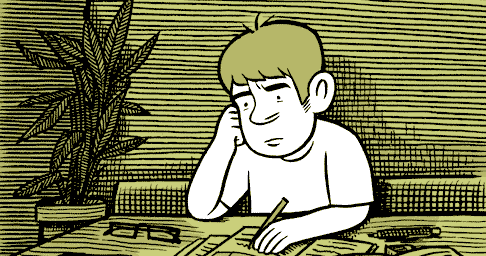
Image from Tonoharu: Part One
This is the third post in a series describing the creative process behind my graphic novel Tonoharu. This installment deals with writing the early drafts.
******
The more I write, the more I’ve come to appreciate the subtle nuance that is a well crafted story.
The old saw “they make it look easy” applies; a well told story flows forward in such an honest and natural way that it’s easy to forget that it had an author in the first place. That behind that timeless tale of love & death was some poor schlub who struggled over countless dead-end drafts, debated with himself over what events to keep and which ones to lose, fretted over settings, timeframes, character histories, dialogue, etc., etc…
The real world doesn’t have an author (well, probably not, anyway), and a good story does such a good impersonation of Life that it’s easy to forget that there’s someone behind the curtain, pulling the strings. The more skilled an author gets, the more invisible his touch becomes.
In his book Story (famous for its inclusion in the movie Adaptation) Robert McKee states that most novice screenwriters have it all backwards: that instead of writing the dialogue first, they should write it last. The dialogue is just the shell, he argues, the final coat of polish; it should be applied only after the core structure of the story is sound.
It’s similar to drawing. If you start in the upper left-hand corner of a sheet of paper and work your way across and down to the lower right-hand corner, you’ll probably end up with a lousy composition. It’s important to have some sense of the whole before you get into the details; even if it’s just a few quick pencil lines. I notice that with both my drawing and my writing, I tend to devote too little time to planning things out; I like to dive right in. But I’m working on it.
These are ideas that I’ve arrived at during the course of writing Tonoharu, not from the very beginning. Initially I started Tonoharu by writing dialogue, beginning on page one, scene one (the writer’s equivalent of the “upper left-hand corner”). And I’ll admit; the first draft of Tonoharu was poorly structured. I’d like to think that in subsequent drafts I’ve turned it around, but it was definitely an uphill battle whipping that imperfect first draft into shape.
I look forward to applying the lessons I’ve learned on the next story I write, when I can again work with a completely blank sheet of paper. Check back in a couple decades for information about that.
******
The next installment of Creating Tonoharu will address with the design decisions that I made for Tonoharu. That will come in two or three weeks. Next week, just for the hell of it, I have something completely different in mind. Stay tuned.
Creating Tonoharu–#1: Laying The Groundwork
Creating Tonoharu–#2: The Idea
Creating Tonoharu #3–Writing the Script
Creating Tonoharu #4–The Design (1/3)
Creating Tonoharu #5–The Design (2/3)
Creating Tonoharu #6–The Design (3/3)
Creating Tonoharu #7–The Drawing
Creating Tonoharu #8–Inking
Creating Tonoharu #9–Computer Stuff
Creating Tonoharu #10–Final Edits
